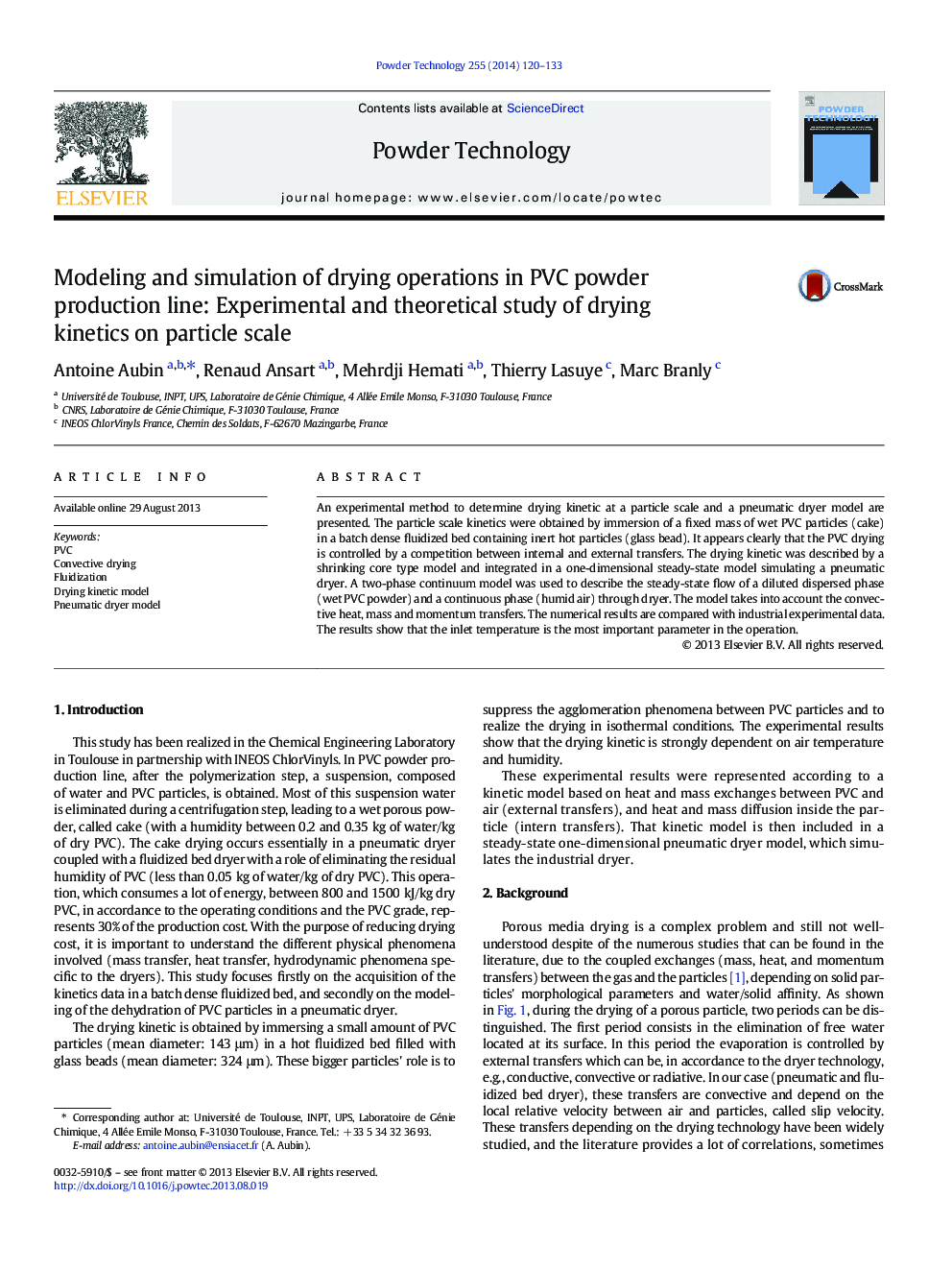| Article ID | Journal | Published Year | Pages | File Type |
|---|---|---|---|---|
| 236140 | Powder Technology | 2014 | 14 Pages |
•PVC drying kinetic is directed by both external and internal transfers.•The drying kinetic is simulating using a shrinking-core type model.•The inlet temperature is the most effective parameter to optimise the process.•Wet PVC powder dispersion is the limiting step of the drying process.
An experimental method to determine drying kinetic at a particle scale and a pneumatic dryer model are presented. The particle scale kinetics were obtained by immersion of a fixed mass of wet PVC particles (cake) in a batch dense fluidized bed containing inert hot particles (glass bead). It appears clearly that the PVC drying is controlled by a competition between internal and external transfers. The drying kinetic was described by a shrinking core type model and integrated in a one-dimensional steady-state model simulating a pneumatic dryer. A two-phase continuum model was used to describe the steady-state flow of a diluted dispersed phase (wet PVC powder) and a continuous phase (humid air) through dryer. The model takes into account the convective heat, mass and momentum transfers. The numerical results are compared with industrial experimental data. The results show that the inlet temperature is the most important parameter in the operation.
Graphical abstractComparison between industrial and numerical results: evolution of air temperature and normalized humidity versus the pipe length.The temperature evolution is well predicted by the model, while differences, due to the dispersion phenomenon, can be noticed on the first meters of the humidity evolution.Figure optionsDownload full-size imageDownload as PowerPoint slide
